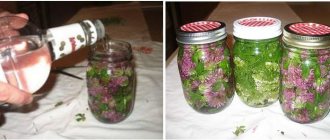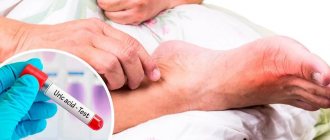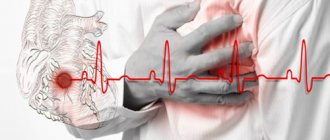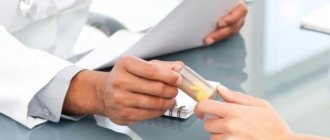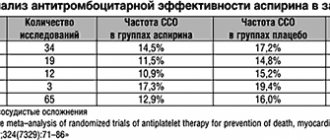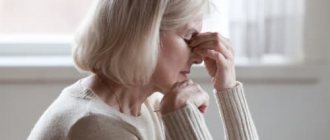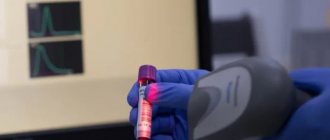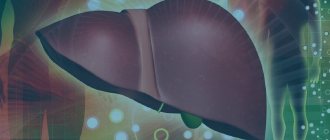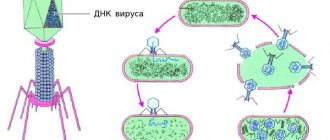Gout is a disease associated with impaired metabolism of special nitrogen-containing substances - purine bases. Purine bases are part of nucleic acids - DNA and RNA, which are responsible for the storage, transmission and implementation of hereditary information in each cell. With gout, the end product of purine base metabolism, uric acid, accumulates in the body.
Uric acid in excess amounts is deposited in the form of crystals, most often with the formation of gouty nodes (tophi) in small joints, causing their inflammation (gouty arthritis), as well as in the kidneys, which leads to the development of urolithiasis. In later stages, uric acid crystals are deposited in other organs and tissues (especially in cartilage, near joints).
Gout is accompanied by severe pain in the affected joints (usually the small joints of the toes or hands), which occurs in the evening, intensifies at night and subsides in the morning. In this case, there may be an increase in temperature - fever.
To treat gout, a special group of drugs is used, called anti-gout drugs.
Pathogenesis of the disease
It is known that purine bases in the human body are broken down into uric acid and then excreted by the kidneys. When the concentration of uric acid in the blood exceeds, its crystals are deposited in the form of monosodium urate in the joints, kidneys, and soft tissues. As a result, arthritis occurs, formations appear on the flexor surfaces of the joints, ears (tophi), kidney damage develops in the form of urate nephropathy, and stones form in the kidneys.
Most often, men aged 30-60 years suffer from gout; in women, the disease develops less frequently, more often in the postmenopausal period.
Causes of gout
- Taking medications:
thiazide diuretics, aspirin (2 g per day), cyclosporines. - Diseases leading to the appearance of gout symptoms:
coronary heart disease (CHD), arterial hypertension, metabolic syndrome, chronic renal failure, psoriasis, some blood diseases. The development of gout can also be promoted by organ transplantation and the introduction of a contrast agent during X-ray examinations. - Abuse of foods rich in purine bases can provoke and aggravate the development of this disease:
fatty meats and fish, alcohol, carbonated drinks, legumes, eggs, chocolate, mushrooms.
How to treat gout of the legs
Since the Middle Ages, gout has been called the “disease of kings,” since it was the holiest persons who had the opportunity to pamper themselves with rich meals and were prone to gluttony. Therefore, first of all, to control gout you need to review your diet. You should reduce your consumption of meat and meat by-products, give up fatty foods, legumes and fish caviar, beer, wine and, if possible, other alcoholic beverages. Patients with gout are usually prescribed diet table No. 6. It is recommended to drink at least 2 liters of fluid per day. Mineral waters such as Borjomi, Narzan, Essentuki will be useful.
In acute attacks of gout, it is recommended to apply ice to the inflamed area and make compresses with dimexide. The use of painkillers and anti-inflammatory drugs that do not contain steroids is indicated.
Note! American scientists have established a relationship between calcium and ascorbic acid deficiency in the body and the development of gout. Therefore, as a treatment and prevention of the disease, you need to take these substances in consultation with your doctor.
For gouty legs, physical therapy significantly improves your well-being. One of the most progressive and high-tech methods of treating gout is shock wave therapy. When the affected tissue is exposed to a shock wave of a certain frequency, the following occurs: microcrystals of salts and connective tissue compactions are loosened, blood flow increases tens of times, which in turn leads to the resorption of salts and tissue restoration.
In especially severe cases, surgical methods are used to remove uric acid deposits in the joints. But to avoid this, you should prevent arthritic diseases such as gout of the leg.
Preventing gout on the legs
In order for the joints of your legs to maintain mobility and performance until old age, you should pay attention to the following preventive measures:
- lead an active lifestyle, walk more, do exercises in the morning;
- give up bad habits;
- eat more cereals, vegetables, fruits, boiled or steamed meat and fish;
- drink more plain water;
- For preventive purposes, take a blood test to determine the content of essential vitamins and minerals. If necessary, supplement the diet with a mineral-vitamin complex.
If you do encounter gout, do not rush to despair. The main thing is not to put off solving the problem “for later”, contact specialists. The already mentioned method of shock wave therapy (SWT) will be a reliable assistant in the fight against the disease. You will find some of the most affordable prices for procedures in medical. Even older people can receive effective and affordable treatment here. Procedures at the Health Plus MC are carried out without anesthesia in a course of several sessions of 10–15 minutes, the number of which depends on the severity and duration of the disease. Qualified specialists will help you maintain a healthy body.
Signs and symptoms of gout
This is an acute attack of arthritis, usually of one joint, most often the first metatarsophalangeal, ankle or knee. Typically, an attack of arthritis develops in the early morning or at night, in the midst of complete health. It manifests itself in the form of severe pressing pain in one or another joint. The affected joint swells, the temperature in the joint area rises, the skin turns red and begins to become shiny. Usually the pain becomes less during the day, but by night it gets worse again. The duration of a gout attack lasts from two to three days to a week, sometimes more. With a repeated attack, other joints may be involved in such inflammation. With a long course of gout, tophi form on the flexor surfaces of the joints, which can open with the release of uric acid crystals. At this moment, the patient experiences quite intense pain.
Acute gouty arthritis
As the disease progresses and in the absence of adequate treatment, attacks of arthritis become more frequent and prolonged, and new joints of the legs are involved. Joint deformation appears due to nodular deposits and bone growths, tophi.
Tophi are uric acid crystals that are deposited in the periarticular tissues and are painless, dense yellowish nodules. Most often they are located in the area of the ears, elbow, ankle joints, joints of the hands and feet.
Joint stiffness gradually appears, making it difficult for patients to move. There is a high risk of fractures. Each new exacerbation of gouty arthritis significantly worsens the course of the disease and contributes to the rapid development of complications.
Uric acid is mainly excreted by the kidneys; the deposition of uric acid salts in the renal pelvis leads to the development of urolithiasis. The passage of concrements (stones) is manifested by intense pain in the lumbar region - renal colic.
Criteria for the diagnosis of gout
| Criterion | Joint | Point |
| Clinical | ||
| Joint involvement during a typical gout attack | ankle/tarsus, 1st metatarsophalangeal joint | + 1 point + 2 points |
| Typical acute attack of gout | erythema over the surface of the joint (reported by the patient or recorded by the doctor), inability to touch or apply pressure to the area of the affected joint, significant difficulty walking or inability to perform. | one characteristic “+1 point” two characteristics “+2 points” three characteristics “+3 points” |
| Dynamics of a typical acute attack | The presence of 2 or more signs, regardless of anti-inflammatory therapy:
| one typical episode “+1 point” recurrent typical episodes “+2 points” |
| Clinical signs of tophi | Drained or plaster-like subcutaneous nodule, often vascularized, with typical localization: joints, ears, olecranon bursa, fingertips, tendons. | Presented "+4 points" |
| Laboratory methods | ||
| Uric acid level (determined during the period of time when the patient is not receiving drugs that reduce uric acid levels) | < 4 mg/dl (240 µmol/l) 6- 8- >10 mg/dl (> 600 µmol/l) | “- 4 points” “+2 points” “+3 points” “+4 points” |
| Synovial fluid analysis (polarization microscopy) | Negative result. | "-2 points" |
| Diagnostic Imaging Techniques | ||
| Signs of urate deposits | Ultrasonic “double-loop” phenomenon or signs of urate deposition when using the CT method with two radiation sources. | "+4 points" |
| Signs of gout-related joint damage | Detection of at least 1 erosion during radiography of the hands and/or feet. | "+4 points" |
Example of using diagnostic criteria:
- Attack of arthritis of the first metatarsophalangeal joint - +2 points
- Characteristics of the episode: erythema over the joint, inability to tolerate touch/pressure, great difficulty walking/inability to use the affected joint +3 points
- More than 1 “typical episode of arthritis” – +2 points
- Hyperuricemia (548 µmol/l) – +3 points
Physiotherapy for gout
In the acute period, applications of dimexide solution are used on the affected joint.
It has analgesic and anti-inflammatory effects. Before starting the procedure, tests are carried out for sensitivity to dimexide (the presence of an allergic reaction), and procedures begin 24 hours after the test. For applications, use a 30-50% solution of dimexide (pure dimexide is diluted with boiled water). A napkin soaked in the solution is placed on the sore joint. Initially, the duration of the procedure is 10 minutes, later it is increased to 2 hours. During the period of remission, applications with mud, paraffin, and ozokerite are used, which helps improve joint function and reduces the urate content in them. During the period of remission, patients are recommended to undergo sanatorium-resort treatment. Health measures have a beneficial effect on the health status of patients and the course of the disease:
- dietary food,
- taking alkaline mineral waters,
- balneotherapy,
- mud therapy
Treatment methods for gout
Treatment of gout consists of both pharmacological and non-pharmacological methods, and should take into account the following factors:
- uric acid concentration, number of previous arthritis attacks,
- stage of the disease (asymptomatic increase in uric acid, interictal period, acute or intermittent arthritis, chronic tophi gout,
- age, gender, obesity, hyperuricemic drugs, polypharmacy.
It should be remembered that asymptomatic hyperuricemia does not equate to gout. Currently, there is no data proving the need for drug therapy to maintain normouricemia in such patients; the main method of therapy in this case is the treatment of comorbid diseases, dietary correction and lifestyle modification.
In the treatment of gout, a combination of non-pharmacological and pharmacological treatments is more effective than monotherapy. When treating, it is necessary to take into account the phase of the disease: acute attack of arthritis, inter-attack period, chronic form, tophi form, serum uric acid concentration, number of arthritis attacks, the presence of comorbid conditions such as diabetes mellitus (DM), arterial hypertension, coronary artery disease, and risk factors for hyperuricemia.
The main aspect of therapy is teaching the patient a healthy lifestyle, weight loss, diet, and reducing alcohol intake, especially beer. Dietary restriction of purine-rich animal products and weight loss help reduce serum uric acid levels.
One of the mandatory conditions for the treatment of gout is the control of comorbid diseases - dyslipidemia, alternative hypertension, diabetes mellitus, as well as weight loss and smoking cessation.
Treatment of an acute attack of gouty arthritis
Nonsteroidal anti-inflammatory drugs (NSAIDs) and colchicine (when taken orally) are used to treat an acute attack of gout. One effective treatment is removal of synovial fluid and intra-articular injection of long-acting steroids. This treatment method is effective and safe.
University
It has been well studied - Hippocrates once called it “the disease of Sunday evening and Monday morning” - but at the same time it is very relevant for modern society. Its carriers are called the cute word “gout,” but gout itself, by its nature, is quite insidious and capricious. The truth, fortunately, is quite manageable. Modus vivendi found out how to control this chronic disease and not allow it to affect the patient’s quality of life with the help of the famous rheumatologist and therapist, Doctor of Medical Sciences Nikolai SOROKA.
UPDATED
Uric acid is to blame for the occurrence of gout attacks - it precipitates in the joints and causes arthritis. As Nikolai Soroka notes, gout is not losing ground today: “Over the past 20 years, the disease has become twice as common. There are no exact statistics for Belarus, but in Western countries gouty arthritis is diagnosed in 1-2% of men, and in New Zealand the figure can reach up to 6%. The disease is relevant because of its sudden onset: a person feels normal, but then pain in the joints suddenly appears, which completely immobilizes the patient. There is an opinion that if you squeeze a joint in a vice until it hurts, it feels like rheumatism, and if you twist the vice again, it feels like gout. Its attacks turn a person off from active life, and if the patient is not treated, he gradually becomes disabled.”
CAUSES
“The view of gout has changed fundamentally over the past decades,” says a rheumatologist. — It is believed that in 90% of cases, the occurrence of gout is associated with a problem in the kidneys - a violation of the transport of uric acid at the level of special transporter proteins, and only 10% of patients have genetic defects in other enzymes involved in the metabolism of uric acid in the body and affecting it content in the blood.
Recently, there has been a noticeable increase in the number of patients with drug-induced gout, which is provoked by taking medications to treat other diseases. These primarily include drugs containing acetylsalicylic acid, which are often prescribed by cardiologists, but it must be borne in mind that acetylsalicylic acid blocks the removal of uric acid from the body, increases its content, and provokes gout attacks. The second group of unwanted drugs is diuretics, which are included in the combination treatment of arterial hypertension.
SYMPTOMATICS
Men suffer from gout much more often, since female sex hormones (estrogens) have a protective effect, reducing the level of uric acid in the body. Before menopause, women rarely suffer from gouty arthritis.
“The disease usually begins at night with very severe pain, swelling, swelling of the big toe,” explains Nikolai Soroka. — Over the course of several night hours, the pain progresses noticeably and becomes unbearable, and in general, the first attack of gout lasts 5-7 days. Then the symptoms disappear, and the person may not feel anything for six months or a year, believing that he is absolutely healthy. But then, after a provoking factor (general overeating, consumption of large amounts of meat products, alcohol, physical overload, stressful situation), the patient again develops gouty arthritis, after which they usually consult a doctor, who sees that the process is serious and non-random. Gout cannot be eliminated, but it can be successfully controlled.”
DIAGNOSTICS
“Gout has a clinical diagnosis—a doctor can identify the disease based on typical clinical manifestations. Additionally, you can take a biochemical blood test to see elevated uric acid levels, although this is not detected in all patients. Unfortunately, we do not have the opportunity to use the absolute diagnostic principle - to puncture the joint and detect uric acid crystals using a polarizing microscope. Therefore, the main indicators for identifying the disease are still the clinical picture and elevated levels of uric acid in the blood. It is curious that during an attack this level can be normal or even reduced, which misleads an inexperienced doctor. Its decrease during this period is caused by the precipitation of uric acid, and then its level rises again,” summarizes the doctor of medical sciences.
TREATMENT
Nikolai Soroka divides the treatment of gout into two medicinal stages: “For the patient, the most important thing is to relieve the pain syndrome, for which non-steroidal anti-inflammatory drugs are used that can interrupt the development of an attack of gouty arthritis. Some of them have an effect within an hour; the attack can be completely stopped in a few days. The prescription of these medications is canceled immediately after the pain passes - they do not have any healing effect.
If the patient pays attention exclusively to pain, then the general condition of the person is important to the doctor, for which a second stage of treatment is carried out, including taking drugs that reduce the level of uric acid in the blood. This significantly influences the prevention of new attacks of the disease, and if, due to some stressful situations or other risk factors, an attack of gout does occur, then, firstly, it is not so pronounced, and secondly, it is easily stopped by modern anti-inflammatory drugs."
PREVENTION
“There is no primary prevention (how to avoid getting gout) - giving the entire population drugs that lower uric acid levels is illogical,” the rheumatologist sneers. “Therefore, there is only secondary prevention, which provides a number of recommendations to prevent new pain attacks. One of the main ones is diet advice, which is not as strict as before. It is important to limit the consumption of foods containing purine bases and fructose, which, especially in large quantities, increase the level of uric acid in the blood. Today, all restrictions on products with purine bases of plant origin have been lifted - asparagus, lentils, beans, beans, tomatoes, etc. Diet for patients with gout - exclusion from the diet of seafood, internal organs of animals (offal), and sweet drinks containing fructose. It is advisable to limit the consumption of meat products; tea and coffee are allowed in moderate quantities. There are no restrictions on low-fat dairy products. But fruit juices, oranges, honey, watermelons containing fructose are not shown or are noticeably limited. Among alcoholic beverages for gout, beer is strictly prohibited, as it increases the risk of developing the disease by 2.5 times; whiskey and cognac are very undesirable; Vodka can be consumed very moderately; among less strong drinks, dry wine is the least dangerous. You need to know moderation in everything, then the chances of controlling the disease significantly increase.”
REFERENCE Modus vivendi . Nikolai Soroka in 1972 Graduated from the Minsk Medical Institute with a degree in general medicine. Doctor of Medical Sciences, Professor, Head of the 2nd Department of Internal Diseases of BSMU . Author of more than 450 scientific papers, member of the editorial boards of a number of Belarusian and foreign specialized medical journals. Trained more than 20 doctors and candidates of medical sciences.
BelGazeta , June 18, 2012
Recommendations for antihyperuricemic therapy
The goal of antihyperuricemic therapy is to prevent the formation and dissolution of existing monosodium urate crystals by maintaining uric acid (UA) levels below 360 µmol/L.
- Allopurinol
– promotes adequate long-term antihyperuricemic therapy. The drug is recommended at a dose of 100 mg daily, if necessary, the dose is increased by 100 mg every two to four weeks. Patients with renal failure require dose adjustment of this drug.
- Uricosuric agents
(probenecid, sulfinpyrazone) are used as an alternative to allopurinol in patients with normal renal function. These drugs are relatively contraindicated in patients with urolithiasis.
- Benzbromarone
- powerful uricozourik; the drug is more effective than allopurinol. It is used for moderately reduced renal function, but requires monitoring due to hepatotoxicity.
- Colchicine
can be used as a prophylaxis for joint attacks during the first month of antihyperuricemic therapy (0.5-1.0 grams per day) and/or NSAIDs.
It is worth noting that in patients with gout, diuretics should be discontinued if possible (except for cases where diuretics are prescribed for health reasons).
- Losartan and fenofibrate
have a moderate uricosuric effect. These drugs are recommended for use in patients who are resistant to or intolerant of allopurinol or other uricosurics, in the presence of hypertension or metabolic syndrome. However, the clinical significance of such therapy and its cost-effectiveness are still unknown.
At the Clinic of High Medical Technologies named after. N.I. Pirogov patients will be able to determine the serum level of uric acid and other important biochemical blood parameters, as well as undergo clinical blood and urine tests, and receive qualified advice from a rheumatologist on treatment both during the interictal period of the disease and during the attack of an acute gouty arthritis.
Diagnosis of gout
The diagnosis and treatment of gout is carried out by a rheumatologist, internist or general practitioner (family doctor). Most often, the patient comes not at the onset of the disease, since the symptoms of acute gouty arthritis quickly disappear, which can be regarded by a person as recovery, but during one of the subsequent exacerbations. The doctor conducts a conversation with the patient, during which the fact of an acute joint attack in the past, the presence of characteristic complaints, as well as risk factors for the development of pathology are established. The phenomena of bursitis and tophi - the main objective manifestations of gout - are more often found on the leg. The diagnosis can be confirmed by a comprehensive examination of the body using laboratory and instrumental methods. If gout is suspected, the following tests are performed:
- Clinical blood test. During an attack of gouty arthritis, an acceleration of the COE, an increase in the number of leukocytes and a shift in the leukocyte formula to the left are possible.
- Determination of urate in blood serum. About 70% of patients with an exacerbation of gout have a high level of uric acid - more than 0.42 mmol/l in men and 0.36 mmol/l in women.
- Determination of uric acid in daily urine. The method is used to assess the risk of kidney stones.
- General urine analysis. It is carried out for the purpose of diagnosing diseases of the urinary system that contribute to the development of gout or are its complication.
- Examination of synovial fluid. Biomaterial is collected for analysis using puncture of the affected joint. The presence of monosodium urate crystals in the joint fluid makes it possible to confirm gout, and its sterility during bacterial culture excludes infectious causes of arthritis.
- Microscopic examination of a biopsy sample from tophi. When viewed through a polarizing microscope, urates appear as needle-shaped crystals with a pointed end. This method is also highly specific in diagnosing gout, like the previous one.
Instrumental diagnosis of gout may include research methods such as:
- Ultrasound of affected joints;
- MRI and CT;
- X-ray diagnostics.
X-rays at the onset of the disease are carried out for the purpose of differential diagnosis with other arthropathies, but there are no specific signs of gout. Only when the pathology becomes chronic can one see intraosseous tophi and marginal bone erosions in the photographs.
Ultrasound examination of joints before the development of chronic gout is effective only during exacerbations.
MRI makes it possible to detect tophi inside the joints even before they appear under the skin, making it possible to begin specific therapy for hyperuricemia earlier. The method is used in differential diagnosis with other diseases, as well as to monitor the effectiveness of treatment. CT, in comparison with other imaging methods, allows for more accurate differentiation of tophi masses.
